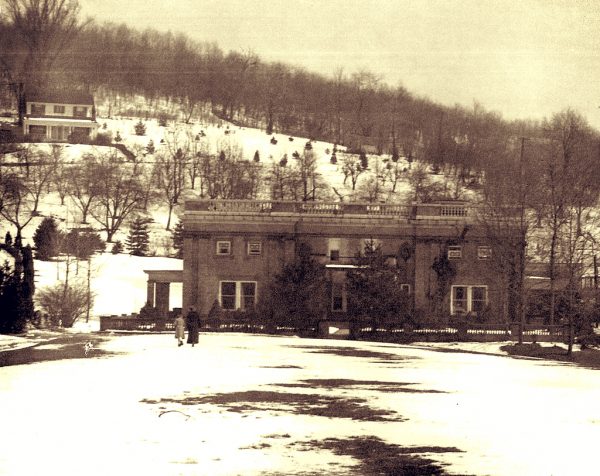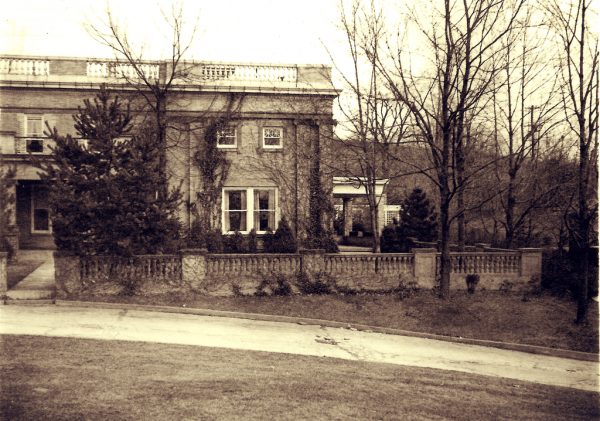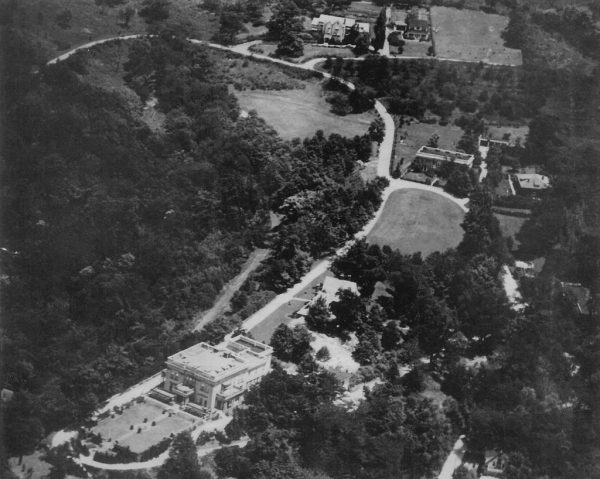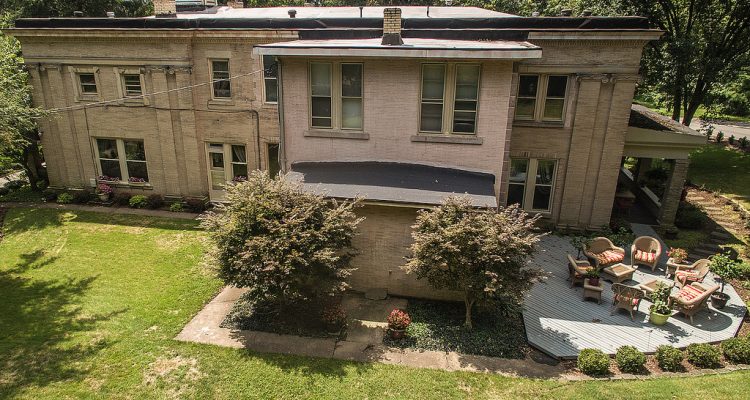Editor’s Note: Weelunk is pleased to announce a partnership with Harvey Goodman Realtor and Scott Connors. In exchange, we will be periodically highlighting some homes for sale that our readers may be interested in. As such, this is a paid piece, and now you know. And if you’re interested in sharing information about an amazing local property that needs a new caretaker, contact us.
Howard Hill, tucked along National Rd between Woodsdale, Dimmeydale and Oakmont, is as rich with history as any part of Wheeling. The only difference? You’ve never heard it…
Originally purchased by the McLure family (they built a pretty famous hotel in 1852), the property was later owned by John Reid. As our state was born against a tumultuous backdrop, Reid refused to pledge his loyalty to the Union, gave up his lucrative horse-breeding plantation, and moved to the South. The property that would become known as Howard Hill was willed to his daughter, Elizabeth Prather.

John Howard was born in Steubenville, OH in 1857. As a young man he worked in local foundries, learning the glass-blowing trade. In 1885, he worked in Charleston as Governor E. Willis Wilson’s private secretary, studied law, and passed the bar. He began his law practice in Wheeling and became Prosecuting Attorney in 1888.
Howard was a successful attorney and serial entrepreneur. He controlled the National Telephone Company and The City & Elm Grove Railroad, which owned Wheeling Park. In the late 1800s, his holdings were worth approximately $5 million.
In 1903, Howard was at the peak of his career. He decided to build a home that would be a showcase, and if you stand at Wheeling Hospital today and look to the east, you can see the Howard Mansion. Designed by architect Fred Faris in the Italian Renaissance style, the home was a showcase by any measure. It is perched at the precipice of the hill, overlooking the valley, with over 30 rooms, and details hand-carved by the most talented craftsmen in the world.

When construction on the ambitious project began, Howard had his builder first construct the carriage house and stables, where the owner and his wife would reside while the main house was being built. The carriage house stands today as 54 Arlington Drive and is illustrative of the grand scale of Howard’s estate.
Once the mansion was complete, the Howards moved into it, and the carriage house went on to its intended purpose. The horses were led in through the large double doors, surrounded by granite columns, to their richly appointed stables. The carriages would approach the building on the right side, to be safely sheltered from any inclement weather.
The carriage house was built to be a self-contained facility, housing the horses, the carriages, and the staff that would tend to both. The second floor was designed to board multiple staff members, with at least five distinct sleeping areas, bathing facilities, and kitchen facilities.
Unfortunately, Howard’s success was to be short-lived. Around 1920, in order to raise much-needed capital, Howard converted a home at the bottom of Arlington Road into apartments. It was a success and led to the construction of a larger apartment home right next to it. These homes still stand and are known today as #2 and #4 Arlington Rd.

In 1922, in a continuing effort to raise money, Howard sold the carriage house to Austin King. Howard cared deeply about the neighborhood he had built up and attached conditions to this sale: That certain parts of the property he conveyed be preserved as “Parks and pleasure… ,” and that the view from the mansion not be obstructed by any further building construction.
Howard’s investment in the Suburban Improvement Company proved to be his financial downfall and led to the property being taken over by Fidelity Investments. Howard died in 1933, and by 1947 the mansion had been turned into apartments (as it remains today), and the rest of his property was broken up and sold off.
Howard’s estate had become one of Wheeling’s most private, secluded neighborhoods, and it is treasured by its residents. With the mansion’s conversion, the carriage house stood alone as the largest and most impressive residence. It was inevitable that it would come to be regarded as one of the most interesting homes in Wheeling.
The King family became well known in Wheeling as the founders of Genuine Parts of WV, which would provide parts for the burgeoning automotive industry throughout the first half of the twentieth century. It is believed that they are responsible for completing the conversion of the carriage house into the grand residence it is today.
The family was immensely proud of the property. Austin King sold the property to his son, William, in 1950. William and his wife Miriam owned the property until it finally was sold to the current owners in 1997, and they have worked diligently to honor the rich legacy associated with it.
PHOTO GALLERY
[satellite gallery=47]While there have been numerous renovations over the course of its 95 years, each has been done with care and attention to detail. The home currently consists of 7 bedrooms, 5 total bathrooms, with 17 rooms in total. The architecture mimics that of the main mansion, with large columns framing the impressive entryway and masonry detailing that is unexpected on a building that was created for such a utilitarian purpose.
A large addition was added to the rear of the home, allowing for a modern kitchen layout, as well as an expanded Master Bedroom on the second floor. A fully functioning mother-in-law suite occupies the southeast wing of the home, with a full kitchen and its own designated sleeping quarters.
The home is situated on a picturesque 1/2 acre lot, right at the top of Howard Hill, about 200 yards northeast of the original mansion. There are large porches on three sides of the home, and the current owners have added outdoor living space just off the kitchen area.
For nearly 100 years, this home has been lovingly maintained by only three families. The current owners are excited to meet the next family that will continue this legacy.
For more details visit here: Scott Connors.
Thanks to Jeanne Finstein and the Friends of Wheeling for their research.
This article is sponsored content.


